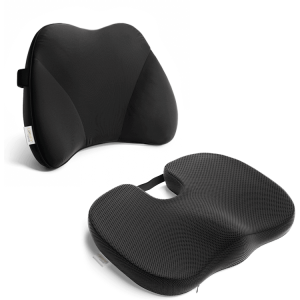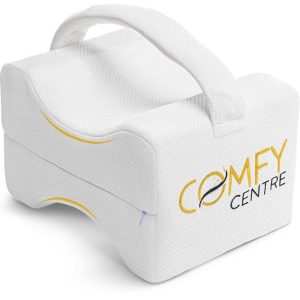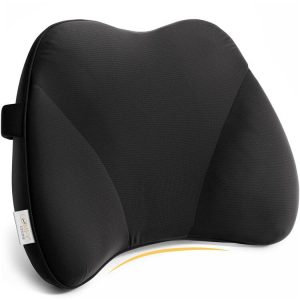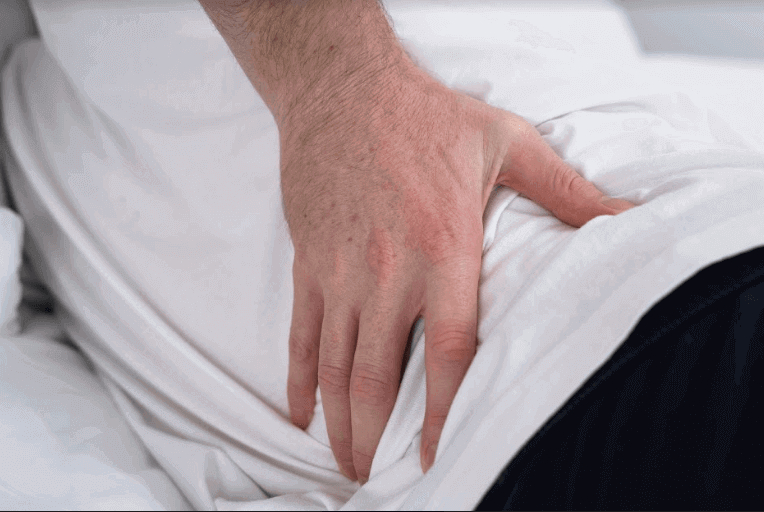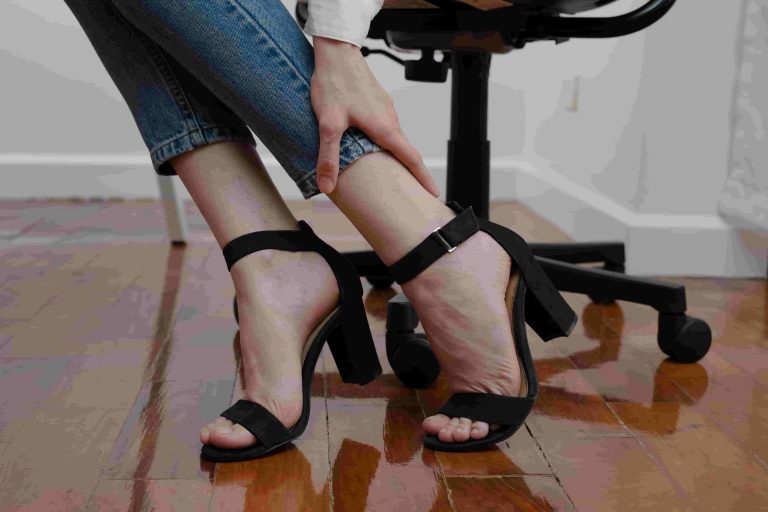
Probably the most hard-working part of your body, your feet, and ankles (literally and figuratively) carry a heavy burden — your entire body weight!
Your feet absorb a significant amount of force with every step you take, which is why it is no question that as you age and/or suffer injuries, your feet also change.
These changes usually affect your ligaments and tissues, this changes the focus of the force of impact onto your feet and ankles which then causes pain.
Your feet and ankles are a vital part of your life. It is needed when performing daily activities. When something in your foot hurts, it can decrease stability, strength, and mobility.
The pain can be caused by many different reasons. For one, it could be the residual effects of a previous injury. Tight shoes may also be the root of the problem.
The discomfort, if significant, can change the way you walk, run, stand, or jump and can also affect the functions of your back, hips, as well as your knees.
Symptoms and Causes of Plantar Fasciitis
Plantar Fasciitis is a condition that is caused by the inflammation of your plantar fascia, a thick band of tissue that runs across the bottom of your foot and connects your heel bone to your toes. Plantar fasciitis is one of the most common causes of pain, felt on the heel area.
Symptoms
Plantar fasciitis causes sharp, stabbing pain. The pain usually surfaces with your first steps in the morning after waking up. It is commonly distinguished as a sharp, stabbing pain. The pain usually makes itself known with your first steps in the morning after waking up.
The pain then decreases when you get up and start walking around but may return after a long period of standing up, or when you stand up after a long period of sitting down.
The condition is more common amongst runners, people who are overweight, and those who wear very tight shoes with minimal to no support.
Causes
Your plantar fascia takes the shape of a bowstring, supporting the arch of your foot, and acts as a shock absorber when you walk. Small tears can occur in the fascia if the tension and stress carried on this bowstring become too great.
Although the cause in many cases of plantar fasciitis remains unclear, repeated overstretching and tearing can irritate or cause inflammation.
Risk Factors
Age
Plantar fasciitis is common among individuals at the age of 40 to 60 years.
Certain types of exercise
Exercises that involve long-distance running, jumping, ballet, and aerobic dancing can contribute to the onset of plantar fasciitis. This is because these kinds of activities place a significant amount of stress on your heel and the tissue attached.
Foot Mechanics
There are quite a few factors when it comes to foot mechanics. It’s all about how much weight is properly distributed when standing up.
Flat feet, a high arch, or even an abnormal pattern of walking can affect the way weight is distributed when you're standing and can put added stress on the plantar fascia.
Obesity
People who are overweight pounds put more stress on their plantar fascia.
Occupations that keep you on your feet – Those who spend most of their work hours walking or standing on hard surfaces like factory workers, teachers, and others can damage the plantar fascia.
Best Treatment For Plantar Fasciitis
Plantar fasciitis can last for months. The pain can make exercise impossible and normal daily activities unbearable.
There are many other causes of heel pain so you should consult your doctor or physical therapist for a proper diagnosis. If plantar fasciitis is the cause of your heel peel, a treatment plan can help speed up your recovery.
The pain brought on by Plantar fasciitis can last for months and can become so severe that exercises and normal daily activities can become so hard to do.
Always have a proper consultation with your doctor as there are many causes of heel pain and not just Plantar fasciitis. A treatment plan can help speed up your recovery If in case that plantar fasciitis is what is causing your pain.
Physical Therapy
Physical therapy will help you return to your desired activities by improving the way your foot is loaded, restoring mobility to your tissue, and addressing areas of weakness or imbalances in your foot. There are several effective physical therapy treatments, including
It helps you get back to your daily activities by working on your mechanics, how your foot is loaded, restoring mobility in the plantar fascia, and working on weak areas and imbalances in your foot.
Manual therapy
This is a form of physical therapy that makes use of the therapist’s hands and other tools to work on the soft tissue in your foot. It’s kind of like massage therapy for the plantar fascia. The therapy loosens up the tight tissue thereby reducing inflammation.
Supportive Shoes
The right shoe can make a big difference for your foot pain. The best shoes for plantar fasciitis have good arch support, cushioning, shock absorption, and a thick heel.
If you're an active runner or on your feet often, replace your shoes every 500 miles or when the back cushion of the shoe gets more than 2 creases. Doing so will allow them to continue to provide the support you need.
Best Exercises For Plantar Fasciitis
Although the fascia can heal on its own, there is always the option of strengthening your plantar fascia and making it more flexible, which will make it recover faster.
Proper exercise and stretching can help alleviate pain, as well as improve strength and flexibility in all the muscles, tissues, and ligaments in your foot.
Get started by doing these exercises and stretches two to three times a day:
Calf stretch
The pain caused by plantar fasciitis can get a lot worse if the muscles in your feet and calves are tight. Loosening the calf muscles by stretching can relieve the pain.
Start by leaning your hands against a wall. Then, straighten the knee of the affected leg and bend the other knee in front.
Both feet should be flat on the ground and you should feel a stretching sensation in the heel and calf of the extended leg. Hold for 10 seconds and repeat two to three times
Rolling stretch
Placing a round object under the foot and rolling back and forth can help loosen up the foot muscles. People can use a rolling pin, golf ball, or specialized foam roller for this.
These objects are relatively easy to find. Once you’ve found one, sit tall on a chair. Then, roll the round object under the arch of the foot. Do this for two minutes.
Stretching the plantar fascia
This exercise can relieve muscle tightness in the plantar fascia. After sitting on a chair, cross the injured heel over the other leg and hold the foot in your opposite hand. Then, pull the toes toward the shin to create tension in the arch of the foot.
Next, place the other hand on the bottom of the foot to feel for tension in the plantar fascia. Use a towel to grasp and stretch the foot if it is difficult to hold otherwise. Hold for 10 seconds and repeat two to three times.
Foot flexes
Flexing the foot increases blood flow to the area and relieves tension in the calves, which can help with the pain. This exercise uses an elastic stretch band, which people can buy from sports stores or online.
Start by sitting on the floor with legs straight. Then, wrap the elastic band around your foot, hold the ends in your hands, and gently point the toes away from the body. Then slowly return to the starting position. repeat this 10 times
Towel curls
Curling a hand towel or facecloth with the toes can stretch the foot and calf muscles. This exercise is most effective when done the first thing after waking up and before walking around. To start, sit on a chair with both feet flat and a small towel in front of the feet Then, grasp the center of the towel with your toes and curl the towel towards you. Finally, relax the foot and repeat five times
Marble pickups
Picking up a marble with the toes will flex and stretch the foot muscles. Use the following steps:
- Sit on a chair with knees bent and feet flat on the floor
- Place 20 marbles and a bowl at your feet
- Pick up one marble at a time by curling your toes, and place the marble into the bowl
- Repeat 20 times
Benefits of Using Insoles
Insoles complete an athlete’s get-up, but not only are they an important component in sports, but they’re now popularly used for everyday life due to its benefits.
Some modern footwear is not ergonomically designed for ergonomics and comfort, most manufacturers have a style in mind than the appropriate anatomical position.
Here are the benefits of insoles and why you should start investing in these nifty products.
Reduces Pain From Existing Foot Disorders
Using insoles prevent you from suffering discomfort or alleviate pain caused by plantar fasciitis. What’s more, they’re a go-to option for people with existing knee, toe, and Achilles pain.
It’s advisable to consult a professional or your chartered physiotherapist before treating it yourself. You may be overwhelmed by the number of insole types available, a doctor’s recommendation helps in clearing that up.
One of the biggest reasons to wear insoles is to keep the feet comfortable and prevent the development of foot disorders.
Prevents Disorders From Occurring
After all, prevention is better than cure, especially when it comes to foot disorders. These insoles have the capability of absorbing foot pressure, whether you’re standing or walking.
For people who live an active lifestyle, you don’t have to fear common foot disorders from happening to you, like Plantar Fasciitis.
Improves Foot Flexibility
Putting pressure on your feet (without the cushioning effects of insoles) often causes inflammation of the thin tissues of your heels. Over time, your heel loses flexibility, which leads to pain.
Insoles provide support to the thin tissue (fascia) which means you maintain your heel flexibility as it prevents extra movement.
Enhances Performance
Athletes with flat arches have a higher risk of having injuries because of the unhealthy, repetitive movements of your foot.
Runners with flat feet do not have the protection to cushion shock forces, which is supposedly absorbed by the foot arch, meaning the force goes directly to the foot.
However, you’re not only experiencing more discomfort or pain, but it negatively impacts your performance as well. Having flat feet impacts the alignment of your bones and muscles.
Wearing insoles provides a quick and easy solution in minimizing undesirable movements, allowing you to conserver more energy while decreasing the risk of injury.
Alleviates Lower Body Pain
If you have been experiencing lower back pain or knee pain recently, then it may stem from your abnormal foot posture. There’s a connection between your feet and lower body, which includes the ankles, knees, and lower back.
The connection may not look obvious, but the domino effect gradually works to the other parts of your body. Due to the abnormal foot movement, your body adapts by altering its movement.
Ignoring this posture defect for long periods takes a toll on your body, which hampers your living quality.
Shoes Last Longer
Yup, you’re saving more money in the long-run as well – shoes are not exactly the cheapest investment.
Incorporating insoles into your daily life helps in reducing the wear and tear shoes have overtime, which means it remains in good condition for longer without paying for repairs or buying new shoes.
Fun Fact: Using worn-out shoes may lead to pain over long periods, including back pain.
Common Mistakes When Buying Insoles
Before you make a purchase, you have to make sure you’re not contributing to the dreaded buying mistakes first-time buyers’ experience.
Depending on your buying decision, it can either provide relief, increase pain, or do no changes at all. Here are the most common mistakes to bear in mind before adding anything to the cart.
Inappropriate Insoles For Your Foot Type
You can have a flat foot or an average foot. However, there are cases where one foot is normal while the other is flat. It depends on the amount of pronation, which is determined by how your arches fall.
Check by standing on your feet and observe how your ankles roll in. It’s not advisable to do this sitting down, this will lead you to think you lack pronation because of how it looks.
If you’re a person with flat feet, you need to purchase a different kind of insole than someone with a normal arch. Purchasing the incorrect insole is painful, similar to how a rolled-up sock would feel.
Incorrect Arch Height
The arch support should be appropriate with the arch height for it to effectively deliver support. Purchasing over the counter insoles gives you no support at all as these take the height of your arch and flatten it.
For people with flexible flat feet, this is when an arch is evident when you’re sitting down. However, the arch falls when standing. In other words, it’s important to look for an insole that supports the neutral position.
Improper Insole Height
Purchasing over the counter insoles tend towards being too short on height. This is because it only goes from the heel, falling short on the ball of the foot.
It only delivers two-point correction: heel and arch. An appropriate insole delivers a three-point correction, and they’re your heel, arch, and your forefoot.
Unfitting Insole Material
Insoles are made out of different materials. Purchasing an insole made out of soft material does not give you the adequate support, which gives you the same result as not using an insole in the first place.
There are also insoles constructed out of hard material, which does not allow it to flex as it’s too stiff. Using rigid insoles do not allow you to naturally walk or run like how humans should.
Going for semi-rigid material gives you enough support while having the ability to flex appropriately. Some insoles have softening material at the topmost of the support, so it can give cushion to your foot.
Over the counter insoles normally use softer materials that’s why they’re bulkier than the optimal size to give support. While this may be workable, it does take up too much space in your shoes.
Insole Size
Insoles, just like shoes, are not one size fits all. You need to purchase the right size for you, it should ideally have two-three more shoe sizes than your actual size to have a wiggle room.
If it’s too long or too short, it does not give you adequate support to your arch, which does more harm than good.
Individuals with flat feet usually purchase bigger shoes because of how the foot flattens, which causes it to spread. This decreases the chances of irritation of your flattened arch, so it’s important to keep this in mind.
Wearing The Wrong Shoe
Avoid wearing worn down shoes or defective ones as it does not allow the correction insole to work properly, making it ineffective.
You can check if your shoes are appropriate by ensuring the pair is crinkled up in the back and bolt upright to the floor.
Most running shoes in the heel are built upon its inside or have a sturdy material inside a softer material on the exterior, which throws the heel outward.
Impatience
Just like with everything else: you need to give time for your insoles to correct the foot. Your foot and body are unaligned, which may take time to achieve the desired results. A break-in period may be needed.
Some people wear it for a few hours a day and believe that their issue is fixed in an instant. If there are no immediate results, they give up.
You’ve likely had your foot or knee problem for a long period (months or sometimes years) so your muscles need time to get stretched for the optimal alignment.
Types of Insoles
Here’s an overview of the different types of insoles, so you can find the type that’s best-suited for you.
Orthotic Arch Supports
These types of insoles either have rigid or semi-rigid insole support for their design. These are often referred to as arch supports. Moreover, they’re originally crafted to ensure that the foot is healthy, regardless of the strenuous activities you partake in.
These have built-in arch support that keeps it from over-collapsing while limiting unnecessary ankle movement. It reduces the strain on your plantar fascia, preventing arch pain and foot disorders.
Using orthotic arch supports guides your feet in making a natural walking motion in each step, which avoids over-pronation.
How do you use it?
These have a small break-in time before you can start using them all day. Only use your arch supports one to two hours a day during the first week, you can then increase it to three to four hours the following week.
Take Note: It’s okay for the orthotic arch supports to be uncomfortable in the first week. After the break-in, it reduces discomfort. However, if this persists, kindly consider purchasing a new insole.
Cushioned Arch Supports
Unlike the Orthotic Arch Supports, these are made completely from cushioned padding, so it does not have a semi-rigid plate.
These are referred to as arch cushions, they’re created to deliver some support to your foot. However, it mainly focuses on maximum cushioning. While it can be used for cases where support is needed, this is best used to give relief from foot fatigue.
Who mostly wears these supports?
Runners and brisk walkers often look for cushioned arch supports as their go-to wear than its orthotic arch support counterpart. What’s more, people who stand for long periods (like security guards and promo girls) prefer this type as well, considering they do not have existing foot conditions.
The built-in arch support from this type is enough to provide support, especially insoles with heel cup feature. However, it can’t compete with orthotic arch support. If you are someone who experiences arch pain or over-pronation, Orthotic Arch insoles are the better option.
For people who have foot fatigue and shin splints, this type is the best for you. Also, for users who have tried wearing semi-rigid orthotic arch support and find it awkward, give Cushioned Arch Supports a shot.
Flat Cushions/Replacement Insoles
These do not have arch support at all, that’s why they’re referred to as replacement insoles. This type of insole is designed to line the bottom of your shoe as an alternative for a sock-liner.
Replacement insoles can feature a cushioned top-coat or a flattened one. You can purchase this type in a variety of materials, including foam, leather, and cotton. Its wide-range of options fits all user preferences. These are thinner than the other types on the list as well.
Sports Insoles
This may vary depending on your sport or activity and these are more technical than other forms. Runners need to have a decent heel and forefoot cushion, it should have a foot support system for the heel to toe motion.
However, cyclists are a different case. They need to have tight-fitting footwear, so a rigid and compact insole works best for them. Meanwhile, winter sports activities need an insole that has a heat retention feature, making it comfortable for you to use in bulkier shoes.
Gel Insoles
These are popular because of their shock absorption properties. True enough, gel insoles are heavier than other materials, but people who take part in high-impact motions, like running, benefit from gel insoles. It decreases foot fatigue and enhances the athlete’s energy.
Warm & Wool Insoles
They are popular because of their insulation properties, in work to regulate and maintain the optimal temperature, regardless of the weather (hot or cold).
These insoles keep your feet cool in the summer. Hence, the reason why golf enthusiasts are fond of using wool insoles.
Heat-moldable Insoles
While it’s true that all insoles will eventually conform to the shape of your foot, it takes weeks for that to happen. These heat-moldable insoles fasten the development, allowing you to be more comfortable over a short period.
This is done by heating it for a few minutes in the oven and standing on top of the insoles as they cool down. By doing this process, the insoles mold to your foot shape right away.
If you’re looking for an insole that gives you a customized fit in an instant, these are a good option.
Verdict
Shoe insoles are a smart investment for active people as they reduce impact, corrects foot alignment, and allows you to perform your activity and day-to-day movements better.
While these are affordable, they do provide effective results in a short period. Whether you’re a serious athlete or not, a pair of shoe insoles improve your quality of life.
Frequently Asked Questions
- How often should you replace your shoe insoles?
Insoles should be replaced within six to twelve months with daily use, depending on how rigorous your activities are. If you’re a runner, then you should change it within three to four months.
- Can you take insoles out of shoes?
Definitely. You can remove the original insoles that come with your newly bought shoes and have them replaced with your preferred insoles.
- Are softer insoles better?
The common notion is that the softer your insoles are the better they are. However, choosing too soft of an insole may deem as ineffective, which may lead to bigger problems.
- Do you feel instant comfort when wearing shoe insoles?
Insoles are widely perceived as walking around with clouds for a shoe. However, insoles are primarily used to realign your feet. The break-in period of your insole is anything but comfortable in the first few weeks, so it does not feel like walking in velvet slippers.
It’s uncomfortable because it applies pressure to the appropriate zones of your feet, depending on your food disorder. The pressure is transmitted up to the legs, muscles, tendons, and bones.
We recommend wearing them for shorter periods (around an hour or two) before using them regularly.
- Can you wear insoles even without having foot conditions?
Absolutely! Insoles are used to prevent having food conditions from happening in the first place. It allows your body to function properly by absorbing shock from high-impact sports or activities.

